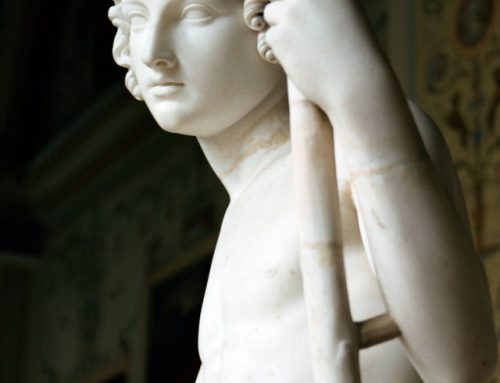“Now he was teaching in one of the synagogues on the sabbath. And just then there appeared a woman with a spirit that had crippled her for eighteen years. She was bent over and was quite unable to stand up straight. When Jesus saw her, he called her over and said, ‘Woman, you are set free from your ailment.’ When he laid his hands on her, immediately she stood up straight and began praising God. But the leader of the synagogue, indignant because Jesus had cured on the sabbath, kept saying to the crowd, ‘There are six days on which work ought to be done; come on those days and be cured, and not on the sabbath day.’ But the Lord answered him and said, ‘You hypocrites! Does not each of you on the sabbath untie his ox or his donkey from the manger, and lead it away to give it water? And ought not this woman, a daughter of Abraham whom Satan bound for eighteen long years, be set free from this bondage on the sabbath day?’ When he said this, all his opponents were put to shame; and the entire crowd was rejoicing at all the wonderful things that he was doing.” This week’s gospel appears to be a simple story about Jesus’ power to heal, his willingness to break ritual law and the hypocrisy of his religious opponents. It is that, but there just might be something else going on here as well. New Testament scholar, Joel Green points out that along with the woman’s physical condition she also probably faced social ostracism. The Greek word for “bent over” holds both a physical and social meaning. She is bent over and unable to face others; she is bent over and cut off from her community in so many ways. Then Jesus arrives, sees her (the Greek means: pays attention to her), and touches her. She stands up straight, physically healed and restored to face-to-face encounters. As per usual, missing the complete miracle, the religious folks object to Jesus’ working on the Sabbath. And so they complain bitterly. Jesus straightens them out (though not like the woman!) and the text concludes that the foes are put to shame. I find that rather interesting. When the story begins the woman is bent over, unable to face others until she encounters our Lord. The religious experts on the other hand stand straight until they encounter Jesus but the story ends with them bent down. We can imagine them hanging their heads in shame. The Lord has the power to heal all our shame. But if we should choose to oppose him, it is perfectly understandable that we are cut off from his healing touch and his loving gaze. Do you know anyone who is broken by shame who needs to see our Lord’s smiling face and experience his healing touch? Maybe yours would be the face through which he might perform a miracle today. Have a great week!







Leave A Comment